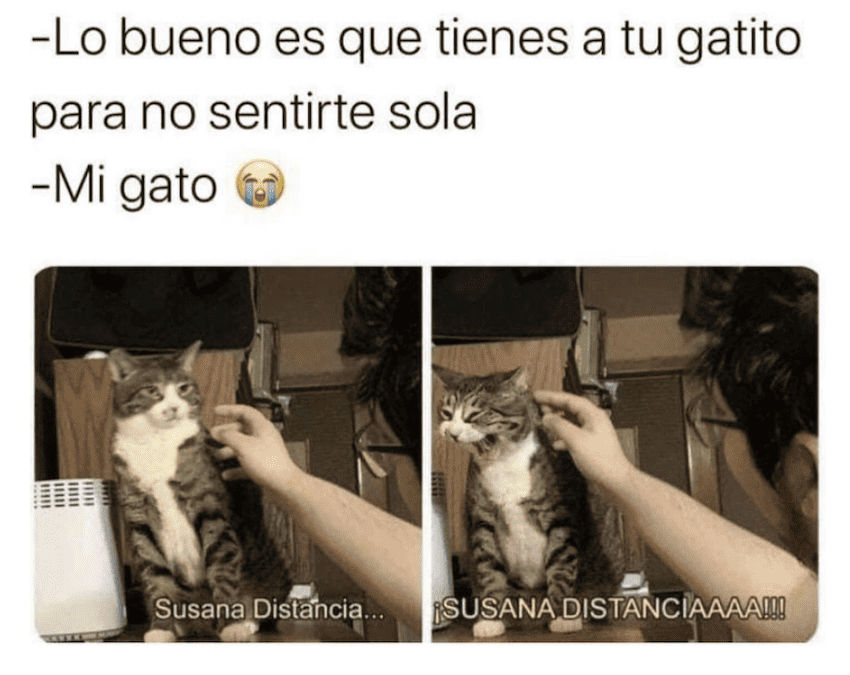
First article: But wait, Mexicans do want us here, don’t they?
I still remember clearly the first time I had a group of Mexicans glare angrily at me.
I don’t remember my exact wording, but I was exasperated and said something like, “Why can’t Mexico figure out that these milk boxes are not actually easy to open at all?” with a chuckle to my host family. (The milk boxes back then said “abre fácil” – “easy open” – but were anything but easy: you had to tear off the corner of it and I always wound up making a huge mess of it).
I wasn’t trying to insult anyone, but boy did I learn my lesson: while this is an incredibly bromista (joke-loving) culture where sarcasm does indeed hold a place of honor, sarcasm applied by a foreigner regarding the way something is done in Mexico is most definitely not appreciated.
This was over 20 years ago, and I’ve learned quite a bit more about this particular culture’s sensitivities since then. And as more and more of my paisanos join me in this beautiful country, I think some studied consideration about how to be respectful a la mexicana is in order, especially as natural tensions in some sectors are rising with such an influx of new people.
To be good guests and immigrants, here are some things to remember:
Mexicans wear their pride on their sleeves; this goes for personal and national pride, by the way. As a country, Mexico has been both invaded and put down (by, collectively, us) enough to be a little sensitive about criticisms toward them…especially by newcomer outsiders. Indeed, who enjoys criticism at all?
Every country, as we well know, has things they do well and things they don’t do so well. If you need to vent about the “not so well” category around here, try to keep it restricted to your personal journal or a close friend or therapist rather than venting online.
Because as some of us have learned the hard way, social media is not a place where nuance can be easily detected and emotions stay calm. Foreigners who vent in public or even private groups seem to find themselves more and more met with an angry “Why don’t you just go back where you came from” sentiment (which, curiously, tends to come much more frequently from the political left rather than the right).Make your curiosity bigger than your desire to start every sentence with, “Well, where I come from…”. Spoiler alert: most Mexicans already know what things are like where we come from if where we come from is the US or Canada.
No one has bad intentions when they start talking about themselves…it’s a way to start or keep a conversation going, after all. But it behooves all of us to remember that most basic of conversational skills: to make a great impression, let the other person do the talking (and really listen).
And if you can, make your best effort to do it in Spanish!Tensions between the economically advantaged and the not-so-advantaged are just as high here as they are elsewhere. And as I’ve said before, seeing a group of people who don’t necessarily work harder or even have more education than you knocking it out of the park because they’re gaming the system (earning in one economy and spending in a different, cheaper one) while you struggle doesn’t feel good.
“But our spending here is helping the economy” might be logical, but nowhere in the world are people logical; they’re emotional. Nor are they usually thinking about the advantages, on a country-wide level, of tourism. What they’re thinking about is the fact that rents have gone up exponentially in areas newly popular with dollar-bearing newcomers and their menus are suddenly in English.
So, what to do? On a practical level, do your best to find out the actual costs of homes and services in a certain area that locals are accustomed to paying rather than simply laying down whatever money’s asked because it’s cheap to you, specifically. Too many people doing this is exactly what drives gentrification, a topic that has many locals in newly-popular areas particularly tense.
At the very least, don’t behave as if you’re doing anyone a favor by spending money here or crowing loudly about “how affordable Mexico is.” For most people living here, it’s not. So enjoy what luxuries you might not have been able to in your home country, but remember that they’re still out of reach for most people.Not everyone is into fast change. In places that have long been known for their catering to the tourist crowd like Los Cabos or Cancún, people know what to expect: lots of English-speaking establishments, high rents, services catering specifically to the tastes of foreigners. Those changes happened long ago, and they’re used to it. In newly-popular areas in Mexico, things are changing (and gentrifying) fast, and not everybody is into it.
In those places that used to be considered “the real Mexico” where not many foreigners could be seen (Oaxaca city comes to mind), the speed of change is a touchy subject for some Mexican residents…especially when it’s accompanied by increased prices for everyone (which is not solely a result of the influx, but the optics make it seem like it is). On the positive side, most Mexicans are honored and proud to see that so many foreigners have fallen in love with their culture and communities, so emphasizing that can do wonders.
Mexico is a delightful and magical place, and it’s a country where most residents are warm and open to the newly arrived. Our task, then, is to remember to be good neighbors first, and careful not to treat our new homes as an amusement park: squeal with delight on the inside.
And, as promised, more memes!
Bilingual laughs: The best Mexican memes of the week
March 23, 2024
Share
It is time once again, my friends! If you love Mexican memes and you have a questionable sense of humor like I do, then you’ve come to the right place.
Seriously though. What better way to learn about Mexico and its humor than through the Spanish-language memes currently making the rounds? See below for some hearty laughs, complete with translations. Enjoy!
Meme translation: “The good thing is that you have your kitty so you won’t feel lonely.” “Safe distance, safe distance!!!”
What does it meme? Well, here it is, folks: the reason I’m not really a cat person. (Why can’t they just let me love them?)
“Safe distance” doesn’t actually do the translation above justice. During the pandemic (oh, how distant it seems now!), the Mexican government came up with a character named “Susana Distancia” as a catchy way to illustrate and remind people (mostly kids) how far they should be standing from each other to lower the risk of transmission.
The name “Susana” is common, and also means something if you split it up: “su sana…” (your safe…” in English). Cute, right? It was also a great opportunity for those who, like that cat, didn’t love being in close proximity with others in the first place.
Meme translation: “My body is like a Catholic church. Filled with bread, wine, and sin.”
What does it meme? Cute, right? I imagine that this is something that would give most Mexicans (who are majority Catholic) a pretty good laugh. Especially now during the winter months, I’m heavy on the bread and wine – got to keep warm and keep up my reserves!
Meme translation: “What do you know about caresses if you’ve never traveled by metro?”
What does it meme? I’ll admit that this one is not new, but it’s one of my favorite ever so I just had to share it with you.
If you’ve ever traveled by metro on one of the more heavily traveled routes (especially during rush hour), you’ve probably, like me, stood staring in disbelief as more people than you thought possible packed themselves into a metro car.
Don’t like people touching you? Too bad. Not only will you be squished in like sardines, you’ll have to fight your way both in and out. Godspeed!
Meme translation: “When I see some chick graffitiing a monument that I peed on three days ago.”
What does it meme? It’s always during the annual women’s marches in Mexico that righteous indignation for the country’s symbols of patriotism swells like rainwater during a hurricane.
Quite a lot of it is geared toward graffiti from the march – women writing feminist messages or symbols on highly visible monuments and buildings. It’s not very ladylike, and extremely unappreciated by those who would prefer the damitas stay home and wait patiently for their equal rights to show up.
Do a side-by-side, though, and I don’t think you’d find much of a difference between women marching for their rights and the average male citizen when it comes to general respect for pristine public spaces.
Meme translation: “Men: not all men are like that.” “Men to their daughters: yes, all men, every single one of them.”
What does it meme? And speaking of feminism, a fair zinger, I’d say.
When wondering about whether you really believe what you’re saying, a good question to ask yourself is this: Would I swear this to the person I most love if I knew they would take my words deeply to heart?
Meme translation: “Bro, how do I know if my Jordans are real or fake?” “Mm, look at the logo. Hold on, look…”
What does it meme? At least in the 20+ years that I’ve been here, Mexico has been a place where you can find counterfeit goods galore (the word that most people would use to describe a knockoff of something is “chafa”) – there are even certain markets that are famous for them.
I’d personally actually seek out those chafa sneakers above, and I’d be willing to be someone out there knew there’d be a market for them. (If any of you see them on sale anywhere, e-mail me? Thanks.)
Meme translation: “What is that?” “An insect.” “What kind?” “A green one.” “Right but what’s it called?” “Jonathan.”
What does it meme? Mexicans enjoy deadpan humor as much as the rest of us! Remember, if you’re not sure what something is called…you can always make up a name!














Sarah, how much gentrification is Xalapa seeing? We'd briefly considered investigating Xalapa as a retirement destination but ultimately decided for something sunnier.
Thank you Sarah. Good advice. My hope is to assimilate well here and offend as little as possible.